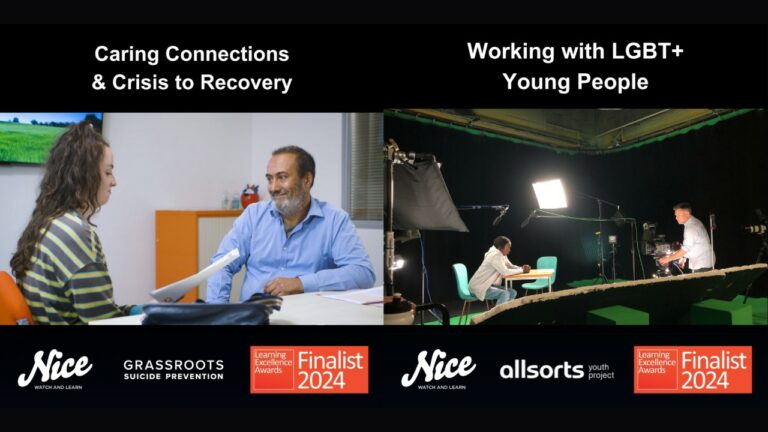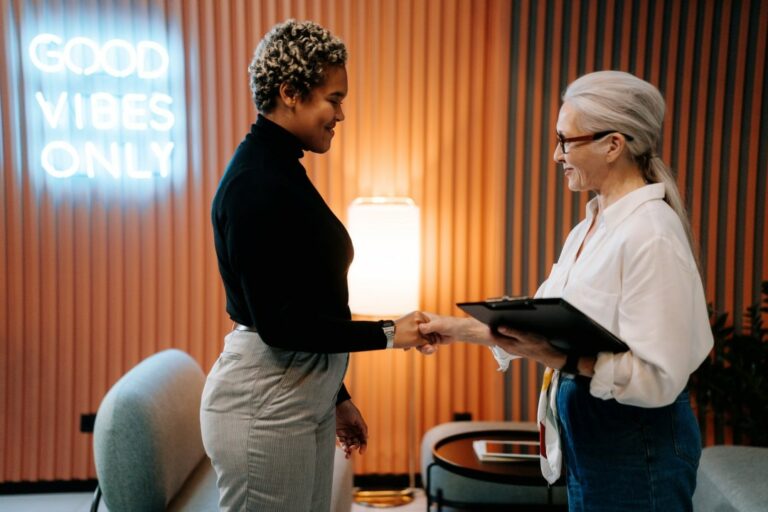Here is a transcript of Ep.3 – Bridgerton.
Hi everyone, my name’s Tom Hickmore and in this episode of “What can TV teach L&D?” I’m looking at Bridgerton.
I make drama for learning, so I’m taking popular TV drama and looking at it with an analytical eye, asking “What can we learn from this that we can be applied in the field of learning and development?”
Costume dramas, well certainly Bridgerton, is an absolute indulgent bit of fun with a snobbish polish. It’s not just because the subjects are aristocrats, but because the idea of it being historical somehow makes us feel a little less guilty about watching the most ridiculous and playful, melodrama about love, marriage and money.
The casting in this production is colour-blind, with black and brown people featured in significant numbers among the aristocrats. Disregarding the contemporary political factors that have brought this about, it’s interesting what effect this has on our perception of the drama. When I see a black guy playing a filthy rich Regency duke, I can’t reconcile that with the idea of him profiteering from slavery, as I would with a white actor in the role. Instead, we are comforted by a reinforcement that this is just an historical fantasy. It’s an adult fairy tale with princesses, and kings and poor woodcutters.
It might seem a bit nuts to try to link a costume drama to L&D, but bear with me, we’ll get there.
In the scene I’ve chosen, a Mother and her servant attend an audience with the queen. The intro to the scene is all about power. The Mother has been summoned to the palace. And the palace with all it’s opulence and grandeur, communicates power. It’s meant to make you feel submissive. And we see that in their performances. And these wide shots. And the high up camera that shooshes down to the Monarch uniting her with the dimensions of the building.
Then we are in the Mother’s point of view as she approaches the Queen – surrounded by courtiers and servants. The closer frame on the mother making her the subject of the scene.
And now the scene proper begins, and we have this lovely little fly-past the piano as bookend.
The Queen in her very fake wig and finery is snorting snuff. An obvious resonance with the modern-day practice of snorting coke – a well-known favourite of the rich and powerful, symbolizing decadence and self-aggrandisement.
The Queen poses an apparently innocent conversation starter, but we know that nothing she says is straightforward. Everything is a power play.
Even when she feeds her dog a tidbit – it’s saying this woman is the leader of the pack.
And the the Queen’s appearance has something to say about power. She’s not styled to flatter. Golda Rosheuvel who plays the Queen is absolutely beautiful, but she is playing an ugly women. Perhaps ugly inside is the thing. So when she paints on makeup it doesn’t enhance her, or hide her, but rather reveals her base character beneath. That atrocious wig, the slightly wrong face makeup.
An aside here – aristocrats in Regency court wore white face makeup made from lead and mercury which was so toxic it made their eyebrows fall out. Whereupon they wore false eyebrows made from mouse skin. So, the portrayal of complexions in this, and just about every other Regency costume drama, is rather fanciful.
The content of this discussion is difficult to explain – but suffice to say the Queen issues instructions to her subject, meddling in the matchmaking game, but does so in code. She doesn’t tell you what to do, she tells a story and expects you to take the inference. This is both a characteristic of the perversity of power, but also a precaution against leaks of gossip via the courtiers.
This scene is a clear example that the apparent content of dialogue isn’t what a scene is really about. Having the Queen speak in cryptic metaphor make this clearer. The scene is really about a powerful woman wielding power over another woman. The subject of the power is happy about the outcome because, for the moment, it benefits her.
It’s a universal message. This could be about any powerful woman and her subject, anywhere in the world.
Which is a wiggly way to say – you could easily tell a corporate story in a metaphoric way with a costume drama. Why would you? Because it’s fun and would allow you to discuss issues at one remove from the reality. How could you? We don’t get those sorts of budgets in L&D.
Well, I did do exactly this, many years ago now. Around 2000 I produced and directed this little training video for Lloyds Bank, written by James Cory-Wright. It was something of a Carry-on Banking story – having fun by, essentially, taking a scene of a meeting in a high street bank and displacing it to 1700. And it wasn’t that expensive. We found an old oak-panelled room and hired appropriate furniture, props and costumes. Now, that lot cost a fair sum, but I’m guessing by today’s standards, less than £6k. So, in the context of a reasonable-sized drama budget, it was very doable.
Want to hear more about what TV can teach L&D? Contact us to sign up to our mailing list.







